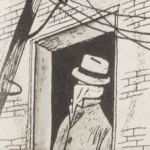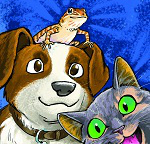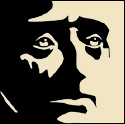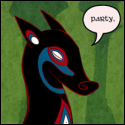|
ShadeofBlue posted:Nope. Here’s a random link from google, there are probably better explanations: http://www.rocketmime.com/astronomy/Telescope/SurfaceBrightness.html I think I get what you're saying. Consider a magnifying glass on a sunny day. From the perspective of the ant on the sidewalk that's getting fried, the Sun didn't get any brighter per unit angular area, it's just that normal-strength sunlight is suddenly coming from a much larger area of "sky" than the usual half-degree Sun. But replace the ant with another lens (let's call it an "eyepiece") that undoes the funnel effect and makes the concentrated light more-or-less parallel again. In what way is that not greater surface brightness now? I'm sure many of us have seen this effect ourselves -- ever point a big scope at the full moon with no filters and see the "flashlight beam" coming out the eyepiece?
|
|
|
|

|
| # ? May 30, 2024 19:40 |
Bad Munki posted:
This is neat, where did you pick those up?
|
|
|
|
|
People call them “constellation binoculars” in case you want a search term.
|
|
|
That Works posted:This is neat, where did you pick those up? Omegon 2.1x42 Wide-Field Binoculars for Star Field observing
|
|
|
|
|
[quote="Humphreys" post=""498277822"] I'm sure a lot of you enjoy agood discussions about our universe what what is actually out there. A few months ago I found a curious youtuber 'Isaac Arthur'. I've since listened to/watched a few episodes a day in his back catalogue. Has some really great theories and knowledge. Get past his speech impediment (or hit the subtitles as he says for those having troubles) https://www.youtube.com/watch?v=JkeLIAd2Nd0 [/quote] loud second on this. isaac arthur is discusses futurism without being starry-eyed about it; he also wades into questions lots of people get dismissive about when discussing the future, like ethics, economics, and individual people's desires.
|
|
|
|
Rolabi Wizenard posted:<great advice> Thanks for writing this. Sorry that I didn't bookmark the thread and forgot to check back! I've only had a few opportunities to go out but what you've said is bang on the money for my experiences so far. Though it's ended up like taking in a stray for the weekend until the animal shelter opens - I've grown attached to the big refractor and can't imagine selling it now. I haven't noticed chromatic aberration, but I've mostly just been finding things and going "wow!" so that'll probably be more noticeable later. One thing I need practice with is aligning the EQ mount, since I haven't got a Polaris to point at. Last night was perfect weather (calm & cloudless, and first time the moon wasn't up) and I even took a compass with me but I was still constantly having to use both knobs to keep things centred. It's crazy how fast the sky moves when you're paying attention to it. I'll have to try at least one of your suggestions for targets next time - and maybe some simple photos, without getting into the deep end of real astrophotography gear. My point&shoot struggles even on a tripod, and the phone eyepiece adapter I picked up has its clamp right where my phone's power button is. I'll figure something out though!  Quick merge of a flash photo and 30-sec exposure as I was packing up for the night - the camera itself has a great zoom but no optical viewfinder so it's impossible to point it at small targets at night
|
|
|
|
That's a really cool pic, I do love merged shots like that. You'll get the hang of aligning, are you in the southern hemisphere or is Polaris just obscured by something? In either case, search around for Drift Alignment and there's a lot of guides on how to compensate for the drift of the stars when you can't do a proper polar alignment. Just ordered myself an Ha filter, so I can start messing around with HaRGB stacks this winter. Will definitely be posting the results here, stay tuned!
|
|
|
|
Gear pics! Here's the new scope, currently running exposures on the Pleiades while I warm up inside a little Upper right corner, you can see the LED streetlight I'm always bitching about. I'm really liking this scope! Forgive the horrible wiring mess, it's 25F out and the wires are all too stiff to move.
|
|
|
|
And the product of last night, the Pleiades 36x120sec, 10 dark, 20 flat
|
|
|
|
lookit those gassy sisters
|
|
|
|
Golden-i posted:And the product of last night, the Pleiades Great scope, great mount, photo has nice round stars out to the corners. I always like finding UGC 2838 in nice shots of the sisters. Now I am *not* a seasoned Astrophotographer, so I have no authority from which to criticize, but what is your post-processing method? It looks like you've stretched in a lot of visible noise to bring out nebulosity, and the non-Pleiades look a touch red-ish. I've seen some say that they try to white balance their images by aligning their histogram peaks, and this effect is what I fear. There is a lot of blue, naturally, in this image and if you crank up the red histogram peak to "balance" the image, you'd be pushing the red higher than it should be. Is that what's going on?
|
|
|
|
Golden-i posted:That's a really cool pic, I do love merged shots like that. You'll get the hang of aligning, are you in the southern hemisphere or is Polaris just obscured by something? In either case, search around for Drift Alignment and there's a lot of guides on how to compensate for the drift of the stars when you can't do a proper polar alignment. Thanks, though it's only because the telescope didn't show up in the long exposure (which is long as that camera can do in one go). I'm 41 degrees south - the pleiades are (is?) in my photo too, the other way up!
|
|
|
|
Rolabi Wizenard posted:Great scope, great mount, photo has nice round stars out to the corners. I always like finding UGC 2838 in nice shots of the sisters. My workflow in Pixinsight is generally a series of reducing noise, masking various parts, and repeat. It works well in really dense nebulae (like the East Veil Nebula) but the noise on this one was brutal. I think I need to adjust and be a little more gentle with how I mask out nebulous parts to make sure that I still reduce the very, very heavy noise that's obvious in this one I didn't put too much work into it though - this was a frustrating night. I took 60 exposures and had to throw out 24 of them because they were incredibly green, for some reason. Maybe a neighbor had a floodlight that was on/off throughout the night, or passing cars might have done it (though I wasn't pointing anywhere near a road). I have no idea. It was worse in the first hour of exposures, and I'm just glad that I had anything salvageable. I might go back through and re-process things with a less generous mask to see if I can retain the nebulous parts and still get rid of some of that noise. Golden-i fucked around with this message at 00:36 on Nov 24, 2019 |
|
|
|
Oh, forgot to mention - the reddish stars are a saturation bump I do as a very last step. I use a star mask, though, so it only targets background/foreground stars and doesn't affect the noise in the nebula itself. I may have overdone it a bit on this one, but in general I really love the effect it has.
|
|
|
|
Currently getting snowed in, so I went back to the start (or at least, the end of my pre-processing flow) and redid the Pleiades:  It looks a lot better, I think. I was much more aggressive with the background extraction (to reduce the left-right gradient) and I was much more aggressive with the noise reduction while being less aggressive with masking out nebulosity. Along with a better contrast balance, I did lose a little bit of the edges of it, but not as much as I thought I would. Looking at it now, it's still a little noisy - I could have probably been even more aggressive. Learning is fun!
|
|
|
|
WIP of Bubble Nebula. I have 6-8h of each filter, but unfortunately a lot of it was taken during high moon illumination (40-70%) and terrible seeing/transparency, so a lot of the raw data is pretty crummy. I tried to do some processing to see what could be milked out of it... but you can only put so much lipstick on a pig  Noise in Sii channel in particular caused a lot of problems, forcing more aggressive processing which overall hurts the final image. That and I got a bit too aggressive with star erosion I think. In any case, need to grab some more signal in Sii and Oiii, then I'll try this again.  
|
|
|
|
Wow, that looks really awesome.
|
|
|
|
Crossposting from the physics and astronomy thread.Luneshot posted:Oh, fun astronomy stuff going on:
|
|
|
|
polyfractal posted:WIP of Bubble Nebula. I have 6-8h of each filter, but unfortunately a lot of it was taken during high moon illumination (40-70%) and terrible seeing/transparency, so a lot of the raw data is pretty crummy. I tried to do some processing to see what could be milked out of it... but you can only put so much lipstick on a pig Daaaaang, that is so awesome. What's your scope/camera setup for this?
|
|
|
|
polyfractal posted:WIP of Bubble Nebula. I have 6-8h of each filter, but unfortunately a lot of it was taken during high moon illumination (40-70%) and terrible seeing/transparency, so a lot of the raw data is pretty crummy. I tried to do some processing to see what could be milked out of it... but you can only put so much lipstick on a pig I'd never heard of the Bubble Nebula but your awesome picture made me do a little research. Thank you!
|
|
|
|
Even so I'm glad Betelgeuse is 700 lightyears away. That's outside minimum safe distance for the gamma burst, right?
|
|
|
|
Kesper North posted:Even so I'm glad Betelgeuse is 700 lightyears away. That's outside minimum safe distance for the gamma burst, right? Man I hope not.
|
|
|
|
Kesper North posted:Even so I'm glad Betelgeuse is 700 lightyears away. That's outside minimum safe distance for the gamma burst, right? Gamma-ray bursts are pretty enigmatic since we've never observed one in the Milky Way. However, the consensus view is that they're associated with the deaths of very massive stars, like >40 solar masses. They're expected to be emitted in narrow jets aligned with the axis of rotation of the star, which depending on the angle of collimation of the beam means it could potentially be dangerous for thousands of light years. In the case of Betelgeuse, it's both likely too small (~12 solar masses) to produce a GRB and its axis of rotation isn't aligned with us anyway. The only candidate that would be a threat is WR 104, and frankly in the list of "threats to the Earth's biosphere" it'd be about even with 'grey goo' in terms of things to be worried about. GRBs excepted, supernovae are only likely to produce noticeable effects on the biosphere if they occur within about 100 ly, and for them to be an extinction threat it's probably more like 30 light years or less.
|
|
|
|
Luneshot posted:Betelgeuse This is super cool, thanks for cross-posting! Golden-i posted:Daaaaang, that is so awesome. What's your scope/camera setup for this? Thanks! Camera: ZWO ASI1600mm, ZWO filters, Moonlight focuser OTA: Orion 8" f/3.9 newtonian Mount: Astro-Physics 1100 GTO
|
|
|
|
polyfractal posted:This is super cool, thanks for cross-posting! Wow, I thought the Bubble Nebula was much smaller than you'd get with a newtonian like that - something like 800mm focal length? I've been using my new refractor a lot, but should really break out my newtonian to get some narrower shots.
|
|
|
|
Yep, my newt is 800mm focal length. I should note that those images are cropped a bit (there was some amp glow and moon gradient that I was having trouble calibrating/removing) so the Bubble is a bit smaller in the raw data. I'd say it's right on the edge of what my newt can do... if there wasn't extra nebulosity around the bubble it probably would be a bit too small for my OTA; bubble is on the edge of not resolving well and without extra nebulosity the image would look pretty empty. Here's a single stretched 300s exposure from the raw data, to give you an idea of scale: 
|
|
|
|
https://www.amazon.com/Celestron-Re...76691151&sr=8-3 I purchased this telescope at Costco for $160 for my 7 year old for Christmas. This seems like a great scope for the price. My wife has a new Canon Mirrorless camera. What accessories can I use to try out some photography? I’m sure I can find something on google but what things are ideal to view through this scope?
|
|
|
|
Kjermzs posted:https://www.amazon.com/Celestron-Re...76691151&sr=8-3 That is a good deal on a very good starter scope. It's a 4" achromat, so you'll see a little purple fringing around the brightest objects, but don't let that get in your way of enjoying it. Even if you eventually upgrade to something bigger and more expensive, that kit will always be a solid "grab-and-go" for when the sky looks great but you're too tired to drag out the GEM and the Mak Newt. You might like something that'll knock down the brightness of the moon: https://www.amazon.com/dp/B07N99RW5K You'll love the moon, for sure, and you can take your 7 year old through the general astronomy Sky Puppy program to learn about different major sky objects and such, when he's done he'll get a certificate: https://www.astroleague.org/skypuppy There's also a lunar observing program that'll offer you challenges and help you learn the names of things: https://www.astroleague.org/al/obsclubs/lunar/lunar1.html The kit seems to come with a cheap diagonal and a cheap 26mm plossl. This will offer about 2 degree wide views of the sky at about a 4mm exit pupil, good for backyard wide-field sweeping around: The Double Cluster and the Pleiades will be well framed and look pretty darn good.   Andromeda will look like a smudge, the darker your skies the better:  The Orion Nebula will probably look about like this, again the darker your skies the better:  The moon is going to be about this big with the 26mm plossl that comes with the scope:  So, you might want to grab something like this: https://www.amazon.com/dp/B0007UQNV8 The Celestron Zoom is pretty good value for it's price, especially if you get a used one in the mid $50s. It's lowest setting can mostly replace your 26mm plossl, and the 60 degrees at 8mm will get you in on the moon with comfort. You might also want a simple barlow: https://www.amazon.com/dp/B00008Y0TM if you intend to get up close on the moon or want to check out planets. The Celestron Zoom all the way up and barlowed gets you 165x, which might be all this scope (and cheap diagonal) should be expected to do. When Jupiter comes around again and is big in the sky at opposition, you'll have no problem seeing the equatorial bands and the red spot, and probably no problem seeing the black pinpoint shadows of its moons when they pass over. Depending on how good your optical figure happens to be, you might be able to get a nicer eyepiece and go even higher with your magnification, but twisting the slow motion controls on your mount to keep something in the field of view becomes a chore, especially if your scope is heavy enough on the mount to cause it to quiver every time you touch one of the knobs. The Celestron Zoom eyepiece also has T threads under the rubber eyecup if you want to buy a T adapter for that camera you mentioned, but that is a can of worms I would find pretty frustrating for very limited utility. You can probably take pictures through this scope, but it will be nothing like the photos you see pf and gi posting in this thread. The camera hanging off the back of this scope, on this mount, might make it so unbalanced as to be unusable. The dovetail doesn't look long enough to allow for much adjustment.
|
|
|
|
Thanks man! That was way more info then I was hoping for!
|
|
|
|
How effective are filters for reducing light pollution? Really dark skies aren't easily accessible where I live, although some driving might get me "moderate" skies if I could find a location to shoot from. I would probably be starting out with just a DSLR and conventional lenses (both telephoto and wide angle) just to try a few things out. I have a Canon 6D which is apparently more sensitive than usual to red/near-infrared compared to other unmodified DSLRs. I don't think I'd be modifying a camera unless I got more serious about it. (Though modifying the 6D is not off the table if I did as I've got another main body since.) Something like this: https://www.astronomik.com/en/visual-filters/uhc-filter.html As I understand it these things are good for filtering out sodium and mercury vapor light, but that still leaves incandescent and LED light pollution, right?
|
|
|
|
Blocking low pressure sodium emissions might be useful in the few towns near observatories, where light pollution controls exist. Other than that, general “light pollution” filters are disappointing. The light emitted by LED or incandescent lamps is inseparable from the light emitted by stars. Narrowband filters are quite effective on nebulæ that emit in the relevant bands. From light‐polluted areas, shooting nebulæ is a better use of your time than shooting galaxies.
|
|
|
|
As a side-benefit, narrowband filters also let you shoot with more moon illumination and closer to the moon, to varying degrees depending on the filter and target.
|
|
|
|
polyfractal posted:As a side-benefit, narrowband filters also let you shoot with more moon illumination and closer to the moon, to varying degrees depending on the filter and target. Do you think he could get decent galaxy shots with an IR-Pass filter, or is IR also pretty prevalent in light pollution?
|
|
|
|
gently caress me sideways, I hadn't heard about Betelgeuse hitting such an uncharacteristic nadir until tonight. I learned about it by going out to my backyard to do some observing and having an uncanny valley moment triggered by the goddammitin' SKY BEING WRONG. I immediately hopped online to see if it was my imagination, because for a second I thought I was losing my mind. For fucks sake, it's dimmer than Bellatrix right now! I've been observing Orion for 26 years and I've seen it meander in brightness a bit (I loves me some brightly colored variable stars. Don't get me started on carbon stars) but I've never seen it dip this low. It's down a magnitude from its average brightness. Just nuts!
|
|
|
|
Right now it’s hard to believe Betelgeuse could ever be brighter than Rigel, or that it took till 1638 for someone to unambiguously describe a star as variable.
|
|
|
|
Alright you guys, what did you get for Christmas? My wife bought me a used C100ED and it's in great condition. I might still replace the focuser because the cheesy set screw visual back does not give much of any confidence when I'm hanging $300+ off of it. The objective looks perfect, the tube shows normal but slight signs of use, and the clamshell is perfect. Purty scope. Another family member got me the Starizona Filter Slider system for my C6/Hyperstar setup. That's useful because when you use Hyperstar and want to change filters, you have to unplug the camera and thread it off the spacers, then spin the filter out of there and spin a new one in there, and then thread the camera back. Playing around like that over your corrector plate in the dark is never a relaxing experience. With the Filter Slider, you just slide out a drawer with the filter inside and slide in a new drawer. This way you can switch between narrow band filters if you're imaging like that or switch between a simple UV/IR cut for broadband targets and and nebula filters for nebula if you're bouncing around the sky using EAA to show galaxies and nebula to the neighbors.
|
|
|
|
Gifttalk: I just recovered from gifting myself a lasik/PRK eye treatment for myself for Xmas. How is this astronomy related, you ask? Because holy poo poo binoculars and telescopes suck with glasses, especially like anything worse than a -5 prescription. Being able to not have to constantly deal with glasses getting in the way of them is going to be so nice. I am sure people with contacts didn't have as much of a problem, but contacts were never too comfortable for me. Also don't even get me started on using glasses / contacts in the cold or while camping to try to get to a dark sky place to see good stars! Fixing my eyes so I can see starts without glasses = best simple (but most expensive!) and a tiny bit astronomy-related purchase I've ever done. Fun fact: this may be hearsay but I think the Pleiades cluster was a simple eye test for Greek/Roman times. If you could see any/all seven of the sisters then you had perfect eye sight.
|
|
|
|
Platystemon posted:Right now it’s hard to believe Betelgeuse could ever be brighter than Rigel, or that it took till 1638 for someone to unambiguously describe a star as variable. considering the only medium for recording observations was sketching them, and that cosmology and religion were deeply intertwined, it's not that hard to believe
|
|
|
|
OMGVBFLOL posted:considering the only medium for recording observations was sketching them, and that cosmology and religion were deeply intertwined, it's not that hard to believe And you didn't have a combination of expert observers and regular viewing schedules, nor did you have all the paper in the world to record your data on. There were no red filters, no flashlights, don't even talk to me about optics, and sure, yeah, Hipparchus might have devised the system for quantifying the relative brightness of stars in 120 BC, but that knowledge wasn't exactly widely or universally distributed. I can well believe that anyone who noticed wasn't in a position to point it out to someone with enough time, education and energy to care about it.
|
|
|
|

|
| # ? May 30, 2024 19:40 |
|
Rolabi Wizenard posted:Do you think he could get decent galaxy shots with an IR-Pass filter, or is IR also pretty prevalent in light pollution? To be honest I'm not sure, I mainly do DSOs. I don't think galaxy work (e.g. RGB images) is impacted by IR-pass filters nearly as much, since most galaxies are emitting/reflecting colors above the IR spectrum. Galaxies tend to have nebulosity hanging around/near them but it's not the main feature, so not as critical as something like an Ha cloud where 90% of the light is being filtered out. Traditionally light pollution has been in the yellower side of the spectrum from sodium vapor bulbs. But with the growing prevalence of broad spectrum white LEDs, it's all gone to poo poo and harder to filter.  I snuck two hours'ish (50x120s exposures) of cometary work in between a DSO last night. This is C/2017 T2 (PanSTARRS):  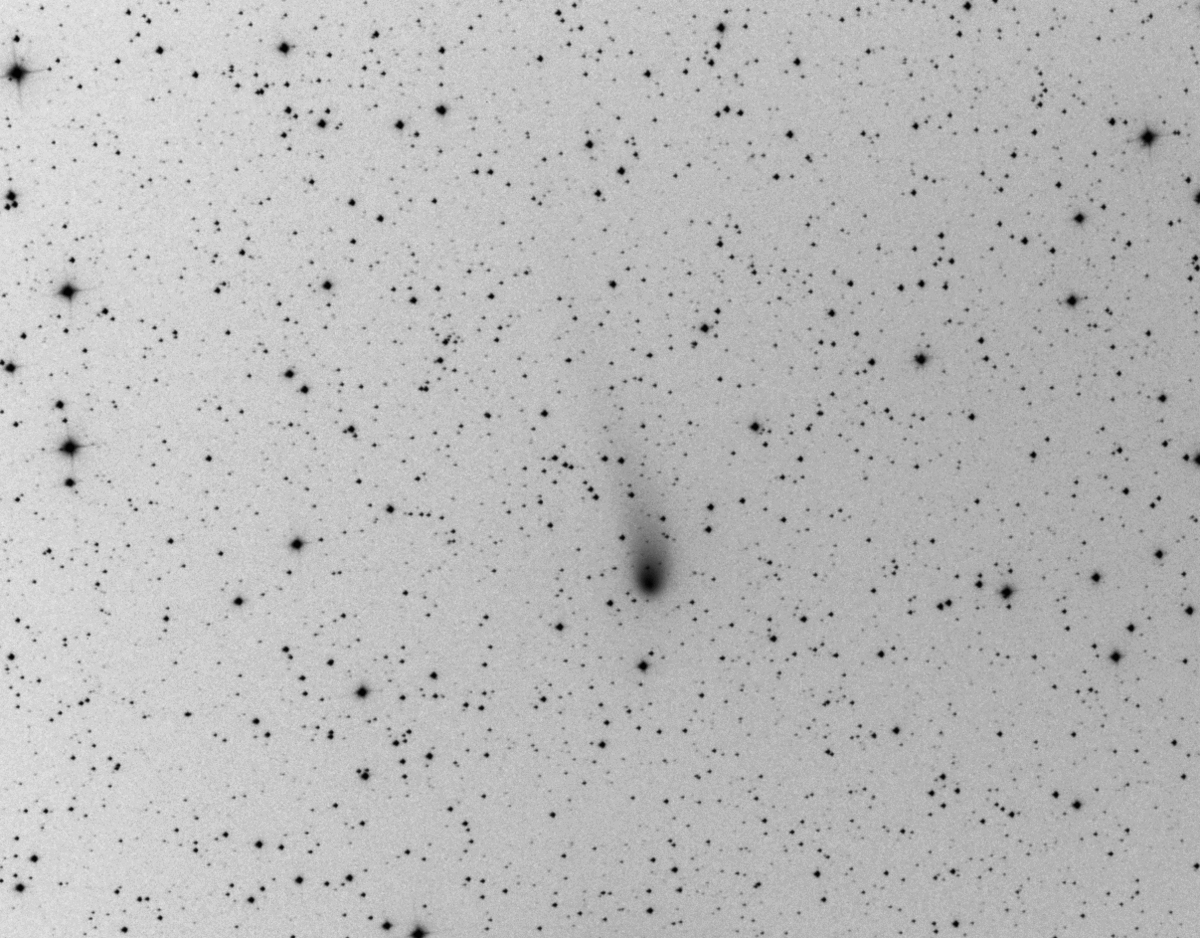 C/2017 T2 (PanSTARRS) is a near-parabolic comet that was discovered in 2017. The comet will reach closest-approach tonight (Dec 29th) at ~1.5 AU from earth, and at it's furthest distance (aphelion) it will swing all the way out to 15,000 AU. I grabbed these images last night over a two-hour time period. The orbital period is about 651,000 years so none of us will see this fellow again! The comet is ~11 magnitude right now, so not visible by eye but maybe with some good binoculars and clear skies.
|
|
|

















